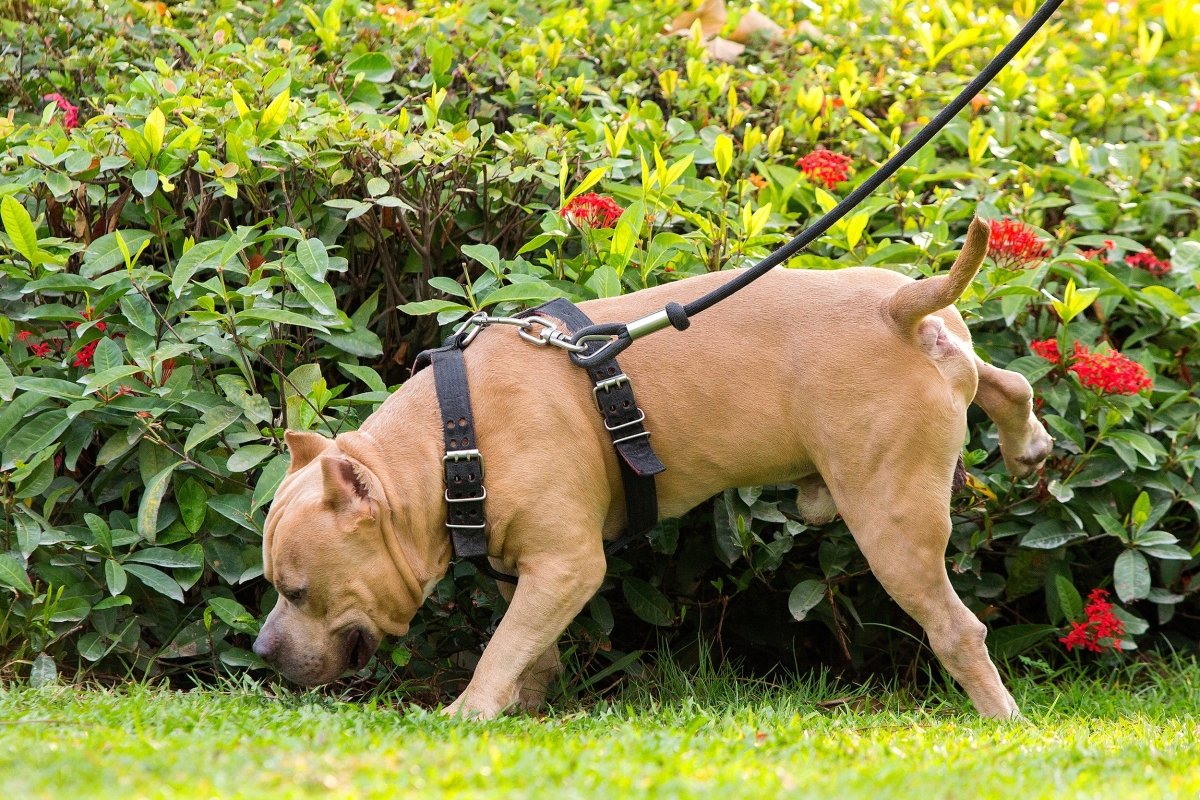Fever in dogs, like in humans, is a reaction of the immune system to destroy pathogens by increasing body temperature; when a dog has a fever, its body is actively working against an underlying illness. Although this is not a bad thing at first, if your dog is unable to fight the pathogens on his own, the fever can take its toll on him and he will not be able to recover without medical help.
In this article, you will find out how serious a fever in dogs really is, how to measure your four-legged friend's body temperature correctly and which illnesses could be the cause of a fever in dogs. You will also find out how you can use AniForte to support your dog's recovery after a visit to the vet in order to strengthen its immune system in the long term. Our supplements for dogs' immune systems can also help with this.
Typical symptoms when a dog has a fever
Fever in dogs is very similar to an outbreak of fever in humans in terms of its symptoms. In addition to the characteristic increased body temperature, you can often recognize other typical accompanying symptoms in your dog, which may also provide a conclusion about the disease or the cause of the fever in dogs. Dogs often show the following symptoms when they have a fever:
- Increased body temperature
- Fatigue & tiredness
- Dry nose
- Trembling & shivering
- Severe thirst & panting
- Refusal to feed
- Increased pulse rate
- Changed defecation
While many of these accompanying symptoms cannot be overlooked, body temperature and pulse can only be measured with the right technique. To measure your dog's pulse, find the artery on the inside of the thigh. Now count the beats for one minute. If these are over 120 bpm - i.e. over 2 beats per second - the pulse is elevated. We will now explain how to take a dog's temperature correctly when it has a fever.
Taking a dog's temperature: here's how!
Many dog owners notice an elevated temperature as soon as they stroke their four-legged friend. However, if the dog has very long fur or doesn't like to be touched, a dog's fever can go unnoticed for a long time. To prevent this from happening, you should always keep a close eye on your dog. If you notice that he drinks an unusual amount even at normal outside temperatures or seems withdrawn and tired, this could be an indication that your dog has a fever.
Even if you don't notice a fever in your dog, the symptoms mentioned above are reason enough to visit the vet. Of course, this also applies if you are unsure or your dog is showing other symptoms of illness.
The right places to measure a dog's fever
Even if you touch your feverish dog, you will be able to clearly feel the increased temperature. Deviating body temperatures can be easily detected, especially in areas where your four-legged friend is less hairy; this is the case, for example, on your dog's ears, belly and under the armpits.
To measure your dog's temperature, you can also purchase a clinical thermometer for your dog and measure the body temperature rectally. If your dog doesn't like having his temperature taken, you can offer him tasty and healthy snacks for dogs from AniForte to distract him. Taking a dog's temperature may also be strange for you at first - but if you are careful and only use the front tip of the thermometer, nothing can happen.
Does your dog have a fever? Read the temperature: From normal temperature to high fever
Does your dog have a body temperature of almost 39 degrees Celsius? What is considered a fever for us humans is completely normal for dogs and no cause for concern. Especially in puppies, but also immediately after physical activity, temperatures of 39 to 39.5 degrees Celsius are no cause for concern. With the following values, you will be able to immediately assess whether your dog has a fever or whether the body temperature is within the normal range:
- 37.5 to 39 degrees: normal temperature
- 39 to 40 degrees: elevated temperature
- 40 to 41 degrees: fever in the dog
- 41 to 42 degrees: high fever (life-threatening over a longer period of time!)
- From 42 degrees: very high fever (acutely life-threatening!)
Typical mistakes when taking a dog's temperature
While we humans can take our temperature via the mouth, ears, forehead, armpits and of course the bottom, dogs can only take their temperature via the anus. Even though in many cases the palpation of the dog's anus provides information about the body temperature, many dog owners want to know exactly.
To avoid accidents or your dog developing trauma to the clinical thermometer, you should proceed with caution, practise taking the temperature from a young age if possible and never take a temperature in your dog's mouth - this could not only lead to inaccurate readings but also to serious injuries.
To avoid accidents, we at AniForte recommend using a flexible thermometer together with some Vaseline and only inserting the outermost tip of the device. Do not use any other unnatural lubricants that are not intended for this purpose.
Causes of fever in dogs
Have you noticed that your dog has a fever? As fever is not a disease in itself, but only a symptom or an indication of a disease, you should always have your pet examined by a vet. The vet will determine the exact cause using a variety of procedures and treat the fever in your dog accordingly. Below we would like to introduce you to some diseases or types of disease that are particularly frequently responsible for fever in dogs:
- Viral infections (often flu-like symptoms: cough / chills / lethargy)
- Bacterial infections (often pain due to inflammation)
- Toxins (often in conjunction with neurological symptoms & vomiting)
- Parasites (often together with vomiting & diarrhea)
In severe cases, serious chronic diseases such as tumors can also be the cause of fever in dogs. In order to be certain, you should consult an expert as soon as an elevated temperature and any typical accompanying symptoms occur. If your dog has previously vomited, had diarrhea or particularly hard stools, take a sample of these to the vet.
What to do if your dog has a fever? Provide acute help
If you notice a fever in your dog or other symptoms of illness, you should of course visit the vet first. It is often almost impossible to cure underlying illnesses with home remedies. If your dog is given the necessary antipyretic medication, for example an antibiotic, you can strengthen his immune system with our supplementary food for dogs from AniForte.
Our natural AniForte dog food already contains all the nutrients and exactly the right composition of high-quality meat and vegetables that your dog needs. So you can ensure that your four-legged friend is supplied with everything that is good for him!
To reduce acute fever in dogs, you should also offer them plenty of water so that they can get rid of pathogens more quickly. If he doesn't want to drink and possibly doesn't eat enough, a tasty chicken broth can stimulate his appetite and replenish your dog's salt and water balance. You can also apply cold compresses to your dog's legs or neck. Plenty of rest and short walks are also recommended if your dog has a fever!
Do you have any questions about fever in dogs or other topics? Feel free to contact us. We will help you and your four-legged friend.



